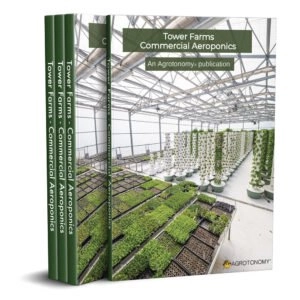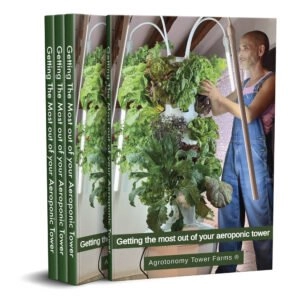We have run many comparative tests with conventional soil farming. Tomatoes grown on hydroponic towers produce a superior yield to conventional soil farming for cherry tomatoes but only an equal crop yield for large varieties such as beefsteak tomatoes.
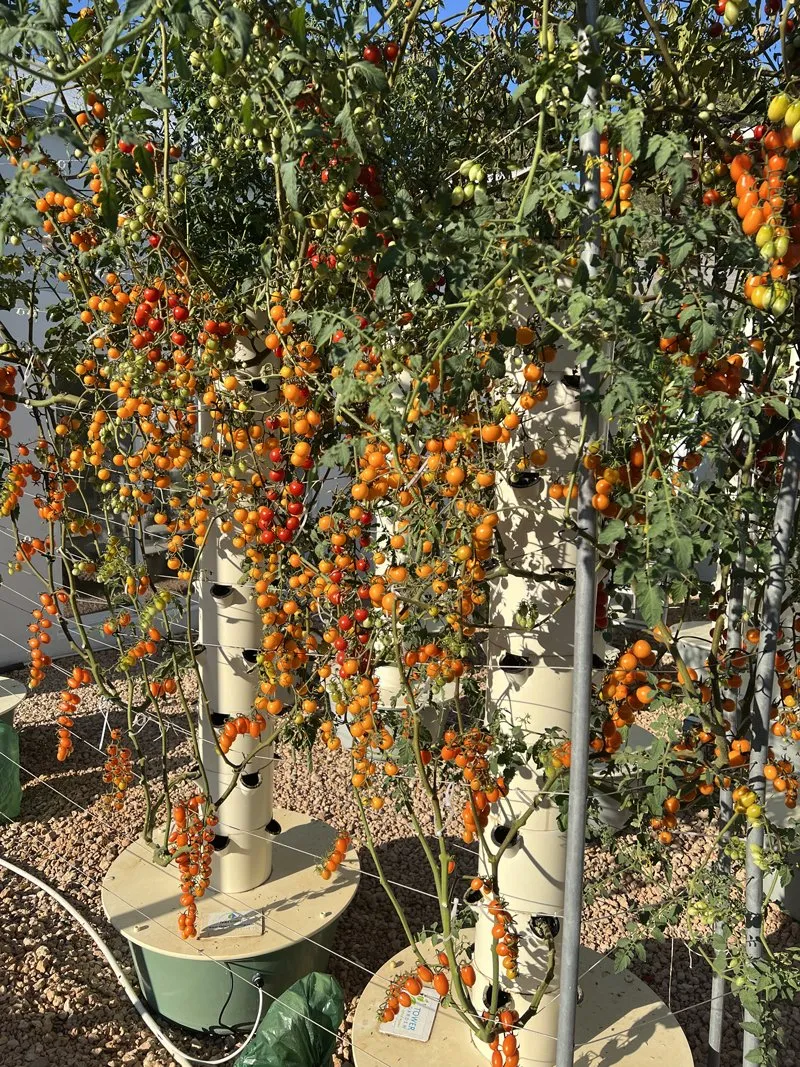
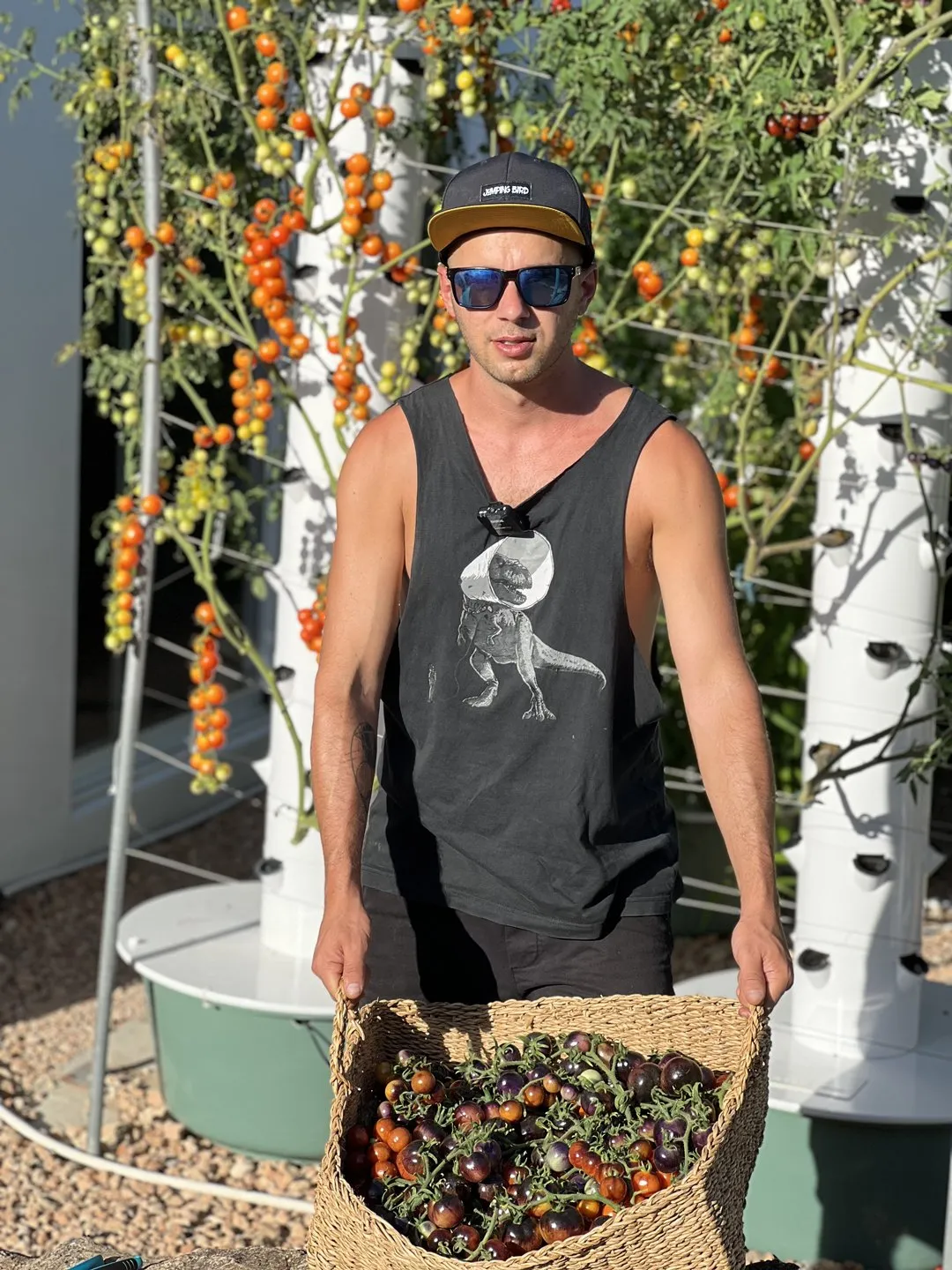
Growing hydroponic tomatoes outdoors:
Compared to greenhouses and indoor environments, exposure to a natural environment, including variations in sunlight and outdoor air, can lead to tomatoes with a more complex flavor profile and potentially higher nutritional value due to stress factors that plants face outdoors, which can increase phytonutrient content.
Space is less of a constraint outdoors, allowing for larger setups to grow more plants without the significant increase in infrastructure costs associated with scaling up a greenhouse.
When vertical farming using hydroponic towers to grow tomatoes outdoors, natural light holds equal importance to seed quality and nutrient effectiveness.
The ideal temperature for growing tomatoes outdoors varies slightly depending on the plant’s specific growth stage. Generally, tomatoes thrive in a daytime temperature range of about 21°C to 29°C (70°F to 85°F). At night, they prefer cooler temperatures, ideally between 13°C and 21°C (55°F and 70°F). Temperatures outside these ranges can lead to poor fruit development, blossom drop, or inhibited growth. The ideal humidity level for growing tomatoes outdoors varies slightly, but generally, tomatoes prefer a daytime humidity range of 40% to 70%. At night, slightly higher humidity can be tolerated, but it is essential to avoid excessive moisture that can lead to diseases such as fungal infections.
Of course, these temperature and humidity levels are just industry-standard averages. In fact, some specific tomato varieties can sustain a much higher temperature and humidity range.
Growing hydroponic tomatoes in an outdoor setting using hydroponic towers involves a higher rate of water loss due to evaporation, which increases water usage compared to growing tomatoes in a climate-controlled greenhouse or indoors with LED lights.
One of the great benefits of growing tomatoes outdoors is the pollination process that beneficial insects perform.
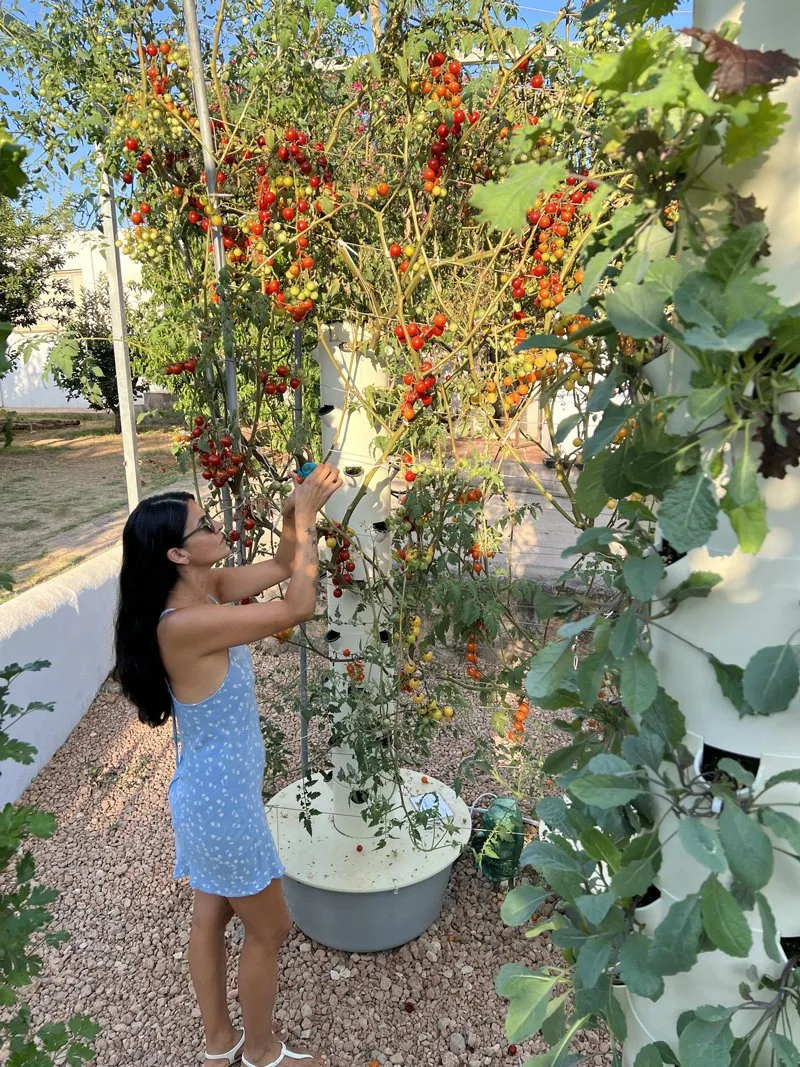
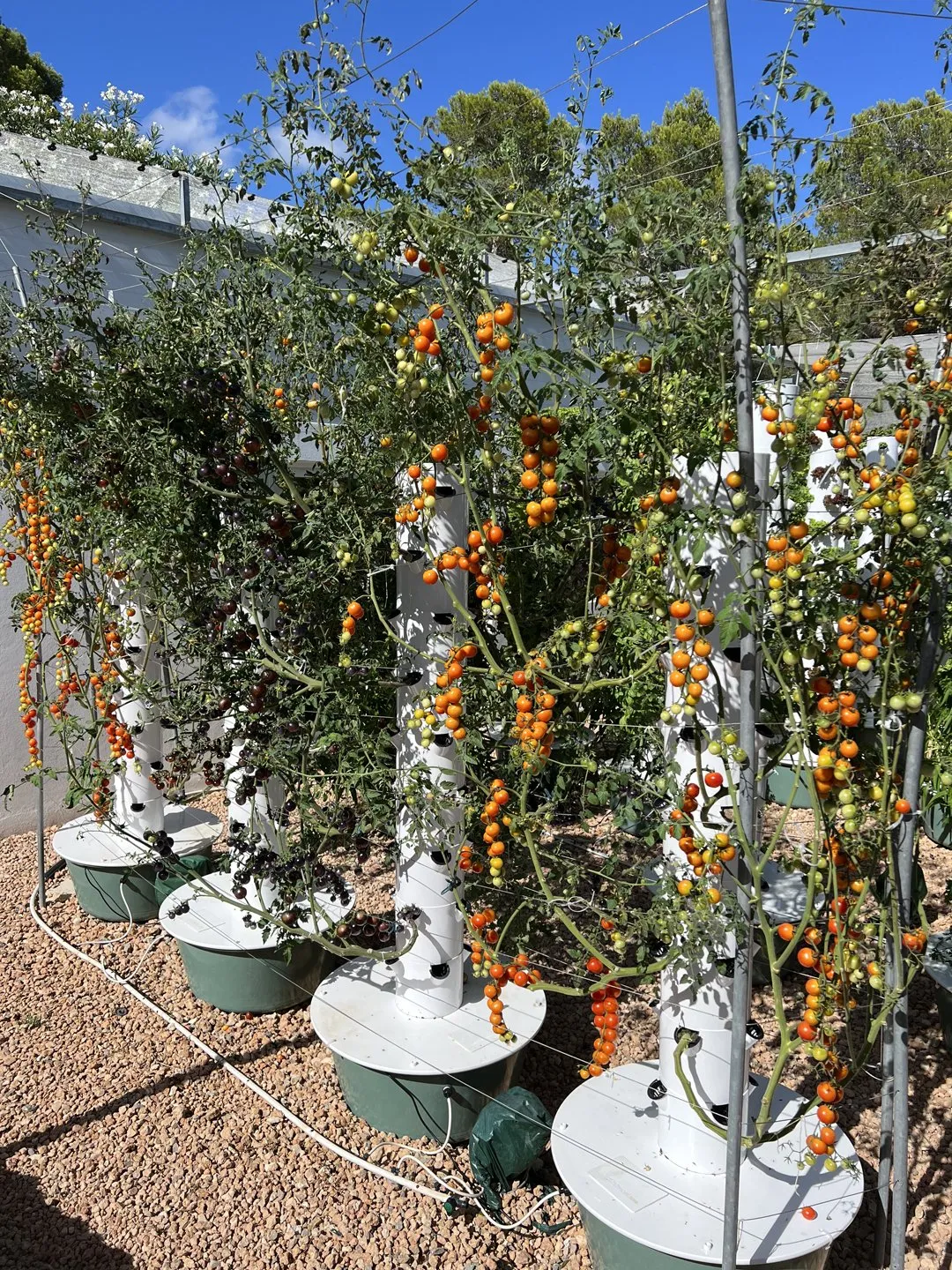
Growing hydroponic tomatoes in a climate-controlled greenhouse:
A greenhouse’s controlled climate extends the growing season, allowing for multiple harvests and the cultivation of tomatoes outside their standard season.
Greenhouses can reduce crop loss and yield fluctuations by providing a barrier against extreme weather and many pests.
In a greenhouse setting, the pollination process must be done manually or by releasing natural pollinators.
Manual pollination is a tedious, labor-intensive process that can be costly.
We recommend using bumblebees when pollinating tomatoes with a beneficial insect strategy inside a greenhouse. Bumblebees can pollinate year-round, even in winter, as long as the climate control of the greenhouse environment is carefully managed to ensure it is suitable for pollinators. This includes maintaining appropriate temperatures, humidity levels, and ventilation. Bumblebees are particularly effective at pollinating various crops under greenhouse conditions due to their ability to buzz pollinate, a method where the bee grabs the flower and vibrates its flight muscles, causing pollen to be shaken loose. This is highly effective for crops like tomatoes, which are self-pollinating but benefit significantly from buzz pollination for increased fruit set and quality.
When considering growing tomatoes commercially in a vertical farm using hydroponic towers, more space must be allocated per tower than with regular crops. Although a tower’s footprint is less than 1 m², we typically allocate 2 m² per tower (including aisles and working space); however, this space allowance must be increased by at least 50% with tomatoes to accommodate the size of the vines.
This is why most tower farmers involved in commercial farming inside a greenhouse prefer to grow leafy greens and herbs.
Leafy greens, aromatic herbs, and medicinal herbs are fast-growing crops that do not usually outgrow the radius of the tower. By keeping the crops within the diameter of the bottom reservoir, more towers can be configured within a specific space without obstructing each other’s light. The overhead cost of running a greenhouse is always broken down by the number of square meters involved. When growing crops in a CEA environment such as a controlled-climate greenhouse, a farmer is usually better off doubling the number of towers and rotating crops every three weeks rather than allocating twice the space for tomatoes and building structures to accommodate the plants’ growth and support the weight of the fruits.
Whether growing hydroponic tomatoes outdoors or in a greenhouse, Agrotonomy builds giant, custom-designed grow cages to accommodate the size of the tomato vines and support the weight of the fruits. Up to 4 hydroponic towers can fit inside one grow cage. These cages maximize crop yield while facilitating the pruning and harvesting processes.
Watch the video to see custom grow cages for tomatoes
Considering that most of the crops grown in Tower Farms end up with a very strong nutrient density and high antioxidant and flavonoid levels, there is also an increase in alkaloid levels in the leaves, giving the plants a much stronger natural defense mechanism. This explains why we have experienced so many seasons of growing tomatoes without ever having to spray anything: no pesticide, no insecticide, nothing! What a difference in terms of pest management with the tomatoes grown in the soil that requires so much ongoing care.
Aside from the advantage of almost never having to spray any pesticide or insecticide, one big perk is water savings. Based on our comparative tests, for each liter of water used in our hydroponic Tower Farm system, we have to give 20 liters of water to the plants growing in the soil for the same number of tomato plants.
Growing tomatoes in a Tower Farm will save an average of 80% water outdoors and 95% inside a greenhouse compared to conventional soil farming. Agrotonomy offers consultation services, from customized development to implementing a commercial hydroponic Tower Farm system for tomato cultivation.
Our extensive experience growing tomatoes using hydroponic towers, from the design of the support cages to plant management techniques, from planting strategies to growing advice, qualifies us fully to consult on commercial projects of any size.
Please note that in this blog post, we are referring to ‘hydroponic towers’, although throughout our website we mention ‘aeroponic towers’. Both terminologies are correct. Hydroponics include NFT (nutrient film technique), DWC (deepwater culture), drip systems, wick systems, ebb and flow (flood and drain), and aeroponics. In other words, we can refer to our technology either as ‘hydroponic towers’ or as ‘aeroponic towers’.


